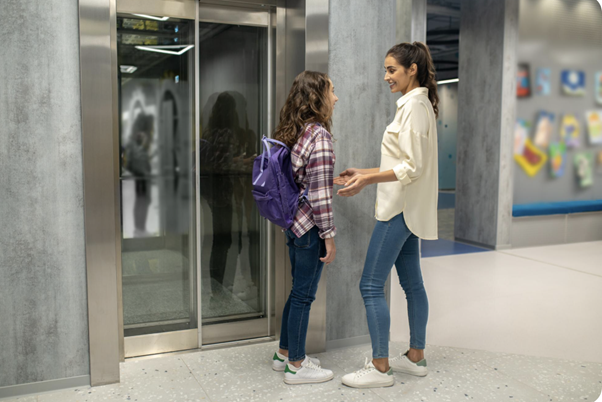Elevators are among the building components that rarely get attention until they stop functioning. People notice cabin interiors, buttons, or display screens, but the real work is being done by the machinery lying behind the scenes. Over the years, these systems have completed millions of trips through daily service. Like any other machine, they eventually wear out too.
So, the big question is: when do repairs stop getting the job done, and when does it make sense to consider a full elevator replacement?
Lifespan of Elevators
The life of an elevator depends on its design. Usage and maintenance also play a role in this.
Typically, the potential lifespan is:
- Hydraulic lifts: 20–25 years
- Screw- and nut-driven lifts: 20–25 years
- Pneumatic vacuum lifts: 15–20 years
- Belt- and rope-driven lifts: 20–30 years
So, the typical lifespan is between 15 and 25 years. However, some may demand early replacement, especially lighter-duty models. On the contrary, a well-maintained elevator can also last longer than this time frame.
Signs to Notice
Some warning signs hinting at a full elevator replacement are:
- Age: After 15-20 years, manufacturers no longer support older parts. Additionally, the performance may also decline.
- Continuous Breakdowns: Regular service breakdowns annoy the users. However, in reality, it hints at mechanical fatigue.
- Hefty Repair Costs: Eventually, the cost of repairing or replacing major parts exceeds the cost of acquiring a new system.
- Slow or Jerky Movement: Any deviation, such as slow travel, uneven stops, trip delay, or delayed door operation, is a safety hazard. One must not overlook such inconveniences and plan for immediate replacement.
- Hard-to-Source-Parts Problems: After a point, the parts become obsolete. They are then hard to source. It manifests in longer downtime and more costly repairs.
- Compliance gaps: Building codes change over time. An older lift may fail to meet today’s safety standards.
- High Energy Usage: Older equipment is generally less efficient. The newer lifts come with features such as regenerative drives and LED lighting. These result in significant energy savings.
Why a Full Elevator Replacement is Better
The installation of a new elevator is not an investment. However, its benefits are plenty.
- Improved Safety: New systems comply with the latest codes. They, thus, provide a greater degree of comfort.
- Better Performance: New systems mean smoother and faster rides. It also results in shorter wait times.
- Accessibility Features: Wider doors, voice guidance, and Braille controls assist in inclusive access.
- Lower Running Costs: With less money spent on repairs and power bills, the running costs are reduced.
- Added Property Value: A modern elevator enhances the building’s appeal and increases its marketability.
Modernization or Full Replacement?
Not every aging lift needs to be replaced instantly. In many cases, it can be modernized to extend its service life.
Some examples include:
- Elevating the cabin interior with new panels, lighting, or flooring.
- Replacing old buttons and controls for easier use.
- Adding new fixtures or handrails for safety.
These updates can elevate the user experience. However, if the core machinery becomes outdated, modernization only delays replacement and does not solve the problem.
Planning for Replacement
A full elevator replacement requires careful planning:
- Professional Assessment: A thorough inspection intended to determine if replacement is really needed.
- Upgrade Strategy: Determining whether selective modernization is sufficient or if a complete replacement is deemed better.
- Installation Planning: Schedule work to minimize disruption, especially in busy periods.
- Testing & Maintenance: Ensure the new lift meets standards for safety and efficiency.
Final Word
When breakdowns, increasing repair costs, and code issues set in, it is a signal to start seriously considering full replacement.


